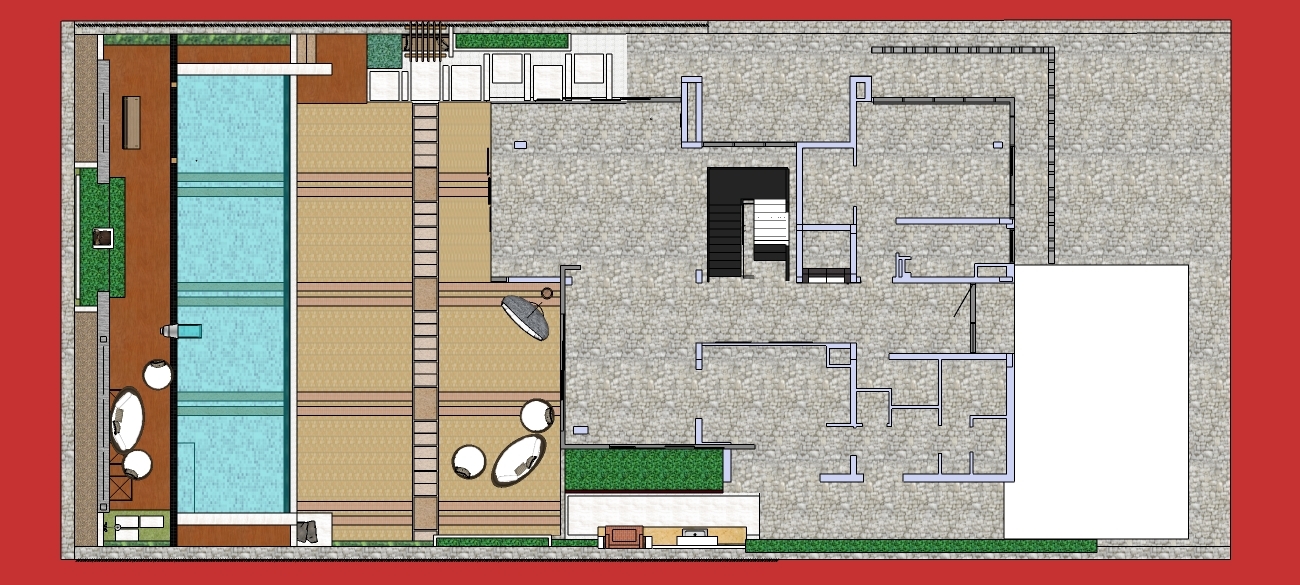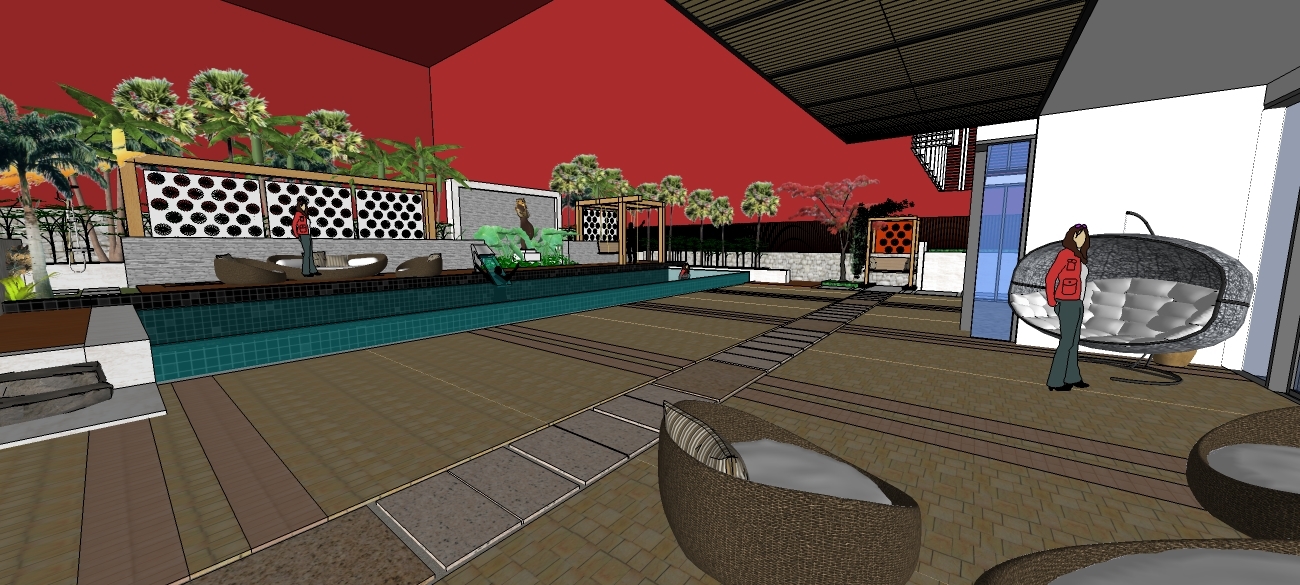Landscape Architecture for Landscape Architects › Forums › GENERAL DISCUSSION › Ideas for porous paving material? Must look nicer than pavers!
- This topic has 1 reply, 5 voices, and was last updated 10 years, 6 months ago by
 Tosh K.
Tosh K.
-
AuthorPosts
-
May 8, 2015 at 5:01 am #151937
 Goustan BODINParticipant
Goustan BODINParticipantHi everyone,
Now designing a backyard and feeling somewhat stuck: it’s a nice looking property with a modern feel, so I’d like to use a hard flooring material that looks nicer than concrete pavers, while being porous.
We’re in a tropical (think non frost) area, budget not too constrained.
Any ideas?
May 11, 2015 at 3:29 pm #151948 Tosh KParticipant
Tosh KParticipantStone pavers w/ open joints? You can always find nice pebbles for the joints and use gravel-lok or similar to keep them from shifting around.
May 13, 2015 at 12:27 pm #151947 Goustan BODINParticipant
Goustan BODINParticipantThanks Tosh, I’ve checked a few videos on Gravel-Lock, and though I’m not very favorable to using chemicals, I must admit the resulting product is quite interesting. I’m now thinking on how to incorporate it, if relevant, to the design.
Any othe suggestions?
May 23, 2015 at 9:55 pm #151946 Alan Ray, RLAParticipant
Alan Ray, RLAParticipantthere is an epoxy stabilized gravel that is permeable and
can be very smooth if you use small aggregate such as granite chip or
birds eye pea gravel….
May 24, 2015 at 4:07 am #151945 Goustan BODINParticipant
Goustan BODINParticipantThanks Alan
May 24, 2015 at 4:13 am #151944 Goustan BODINParticipant
Goustan BODINParticipantAfter deliberation with my client, we’ll have stone pavers (travertine) with fine open joints (filled w/ pea crushed rock) for the main material.
Strips will be made out of gravel-Lok (or similar) & fine pebbles. They’ll hopefully collect more rain, because downpours in tropical regions are just brutal.
Subbase (crushed rocks on geotextile) will store most rainwater to let it percolate back to the water table, and/or be released slowly by evaporation to coll the yard.
A hidden drain will collect water in excess to the ‘traditional’ evacuation drain.
If anyone ever need it, I have an illustrated text to tell this with a bit more details to my client, I can send it upon request (PM)
May 24, 2015 at 12:18 pm #151943 Andrew Garulay, RLAParticipant
Andrew Garulay, RLAParticipantYou might want to make a mock up of a small area. Travertine, at least what is readily available where I am, is pretty thin and light weight. I’d be concerned about movement if one stone does not butt up against another in an open joint situation.
May 24, 2015 at 12:45 pm #151942 Goustan BODINParticipant
Goustan BODINParticipantAndrew, thanks a lot for this matter-of-fact information, it’s quite precious.
I’ll find more information and possibly re-think the design: having moving stones is not an option.
May 25, 2015 at 9:00 am #151941Tyler Tan
ParticipantDear Goustan,
I have suggested one material of flooring, it is very fantastic, I have sent you gmail box. Please check it(if not have, check rubbish box)
As file is a bit big attched, I concerned it will move to rubbish.
Thanks
Tyler
May 25, 2015 at 9:11 am #151940 Goustan BODINParticipant
Goustan BODINParticipantThanks for your suggestion and your email, Tyler, I sent you an answer by email.
May 28, 2015 at 6:42 pm #151939 Tosh KParticipant
Tosh KParticipantmight want to use some type of edging to keep them in place (though it will get a bit complicated); if the client is willing to pay, you should be able to get travertine thicker from the quarry blocks.
do make sure the water doesn’t sit in the gravel below – it can begin to emit and odor if allowed to stagnate below.
May 29, 2015 at 2:27 am #151938 Goustan BODINParticipant
Goustan BODINParticipantThanks Tosh, you reach me just in time!
Typical spec drawings I found online recommend a drain at the bottom to get rid of surplus water, and I was just thinking: “why do they have this drain at the bottom, the water should be stored there to have the time it needs to get back to the water table, or evaporate through the pavement and cool the air”
So well, I really wanted to get that drain on top of the rock sub base to catch only superficial waters and prevent ‘overflow’ above the surface.
I never thought of the smell…
Thanks! 😀
I now have the stone supplier, I will check with him his offer on travertine. My thinking is that it should be laid on a full dry mortar bed (laid on top of rock sub-base), since we have these very porous catchment strips made out of gravel lock everywhere in the yard.
The thing is, if we drain water out of the rock bed, why have it in the first place? I’m a bit puzzled here, I’ll have to read more on the topic…
-
AuthorPosts
- You must be logged in to reply to this topic.




